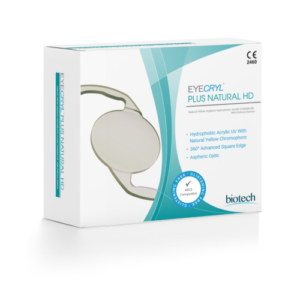
What is Astigmatism and How Does It Occur?
Astigmatism is a common type of refractive error characterized by an irregular curvature of the cornea or lens of the eye. Unlike normal eyes, which have a round and evenly shaped cornea and lens, individuals with astigmatism have a cornea or lens with an uneven curvature, resembling more of a football shape than a basketball shape. This irregularity causes light to focus unevenly onto the retina, leading to distorted or blurred vision. Astigmatism can occur due to a variety of factors, including genetics, eye injuries, or changes in the eye’s structure over time.
What are the Symptoms of Astigmatism?
Symptoms of astigmatism include
- Blurred or distorted vision,
- Eye strain, headaches,
- Difficulty seeing at night, and squinting.
People with astigmatism may experience discomfort or fatigue, especially after prolonged visual tasks. These symptoms may prompt individuals to seek an eye examination to determine the presence and severity of astigmatism.
How is Astigmatism Diagnosed?
Astigmatism is diagnosed through a comprehensive eye examination conducted by an optometrist or ophthalmologist. Tests such as visual acuity testing, refraction, keratometry, and corneal topography are performed to assess the degree and axis of astigmatism. These tests help determine the nature and severity of the condition, guiding the appropriate treatment plan.
Which Age Groups Does Astigmatism Affect?
Astigmatism can affect individuals of all ages, from infants to older adults. While some may be born with congenital astigmatism, others may develop it later in life due to environmental factors or genetic predisposition. Regular eye examinations are crucial, especially during childhood and adolescence, to monitor vision development and detect astigmatism early. Understanding the different types of astigmatism can help healthcare professionals tailor treatment plans to individual needs and address any specific challenges associated with each type.
Is Astigmatism Genetic?
Genetics plays a significant role in astigmatism development. Individuals with a family history of astigmatism are more prone to developing the condition, although environmental factors and lifestyle choices also contribute. Understanding genetic influences helps healthcare professionals assess the risk of astigmatism and implement preventive measures to mitigate its impact.
Does Astigmatism Require the Use of Glasses or Lenses?
Many individuals with astigmatism require corrective lenses, such as eyeglasses or contact lenses, to improve their vision. These lenses are specially designed to compensate for the irregular curvature of the cornea or lens, allowing light to focus properly on the retina. Gas permeable contact lenses are particularly effective for people with severe astigmatism or those who prefer contact lens wear.
Can Astigmatism Be Treated Surgically?
Refractive surgeries like photorefractive keratectomy (PRK) or LASIK offer options to reduce or eliminate the need for corrective lenses for people with astigmatism. These surgical procedures reshape the cornea to improve its focusing ability, thereby correcting the refractive error. However, candidacy for surgical intervention depends on individual factors such as corneal thickness, refractive stability, and overall eye health. Cataract surgery may also be considered for individuals with astigmatism and cataracts.
How Does Astigmatism Affect Eye Health?
While astigmatism itself does not directly threaten eye health, uncorrected astigmatism can cause discomfort, eye strain, and may increase the risk of developing other vision problems such as amblyopia (lazy eye) or strabismus (crossed eyes). Prolonged astigmatism may impact daily activities and quality of life. Regular eye examinations are essential to monitor changes in vision and ensure that any underlying eye conditions are promptly diagnosed and treated.
FAQ
How is Astigmatism Affected During Pregnancy and Breastfeeding?
During pregnancy and breastfeeding, hormonal changes in the body can affect various aspects of health, including vision. While astigmatism itself may not be directly affected by pregnancy or breastfeeding, hormonal fluctuations can lead to changes in the corneal curvature and refractive properties of the eye. Some women may notice temporary changes in their vision during these periods, including fluctuations in refraction or the development of astigmatism. It is essential for pregnant and breastfeeding women to undergo regular eye examinations to monitor changes in their vision and ensure that any underlying eye conditions are promptly addressed.
What are the Misconceptions and Myths About Astigmatism?
There are several misconceptions and myths surrounding astigmatism, which can lead to confusion and misinformation. Some common myths include:
- Astigmatism only affects older adults.
- Astigmatism is caused by reading in low light or sitting too close to the television.
- Wearing glasses or contact lenses will worsen astigmatism.
- Astigmatism can be permanently cured with eye exercises or natural remedies.
It is essential to dispel these myths and educate individuals about the facts and realities of astigmatism. Wearing prescribed glasses or contact lenses can help correct astigmatism and improve vision without worsening the condition. Additionally, while certain exercises may help alleviate eye strain, they cannot permanently cure astigmatism.
What are the Suggestions to Make Daily Life Easier in the Presence of Astigmatism?
Living with astigmatism requires adopting strategies to minimize visual discomfort and optimize visual performance. Here are some suggestions to make daily life easier for people with astigmatism:
Wear Corrective Lenses: Wear prescribed eyeglasses or contact lenses to correct astigmatism and improve vision clarity.
Take Regular Breaks: When working on tasks that require prolonged visual focus, such as reading or using digital screens, take regular breaks to rest your eyes and prevent eye strain.
Ensure Proper Lighting: Ensure adequate lighting when reading or performing tasks that require clear vision. Proper lighting can reduce eye strain and improve visual acuity.
Follow Healthy Habits: Maintain a balanced diet, stay hydrated, and get regular exercise to promote overall eye health and well-being.
Attend Regular Eye Examinations: Schedule regular eye examinations with an optometrist or ophthalmologist, especially for individuals considering cataract surgery or photorefractive keratectomy, to monitor changes in your vision and ensure that your corrective lenses are up-to-date.
Practice Eye Care Hygiene: Clean and maintain your eyeglasses or contact lenses regularly to ensure optimal vision correction and prevent eye infections.
Use Lubricating Eye Drops: If you experience dry eyes, use lubricating eye drops to relieve discomfort and keep your eyes moist.
By incorporating these suggestions into daily life, people with astigmatism can reduce eye strain, optimize visual comfort, and maintain overall eye health and well-being.
Our Bestsellers
Categories
Company
Media
Follow Us
© Copyright Biotech /Terms Of Use - Privacy Policy
Version 2_CT_1212222



